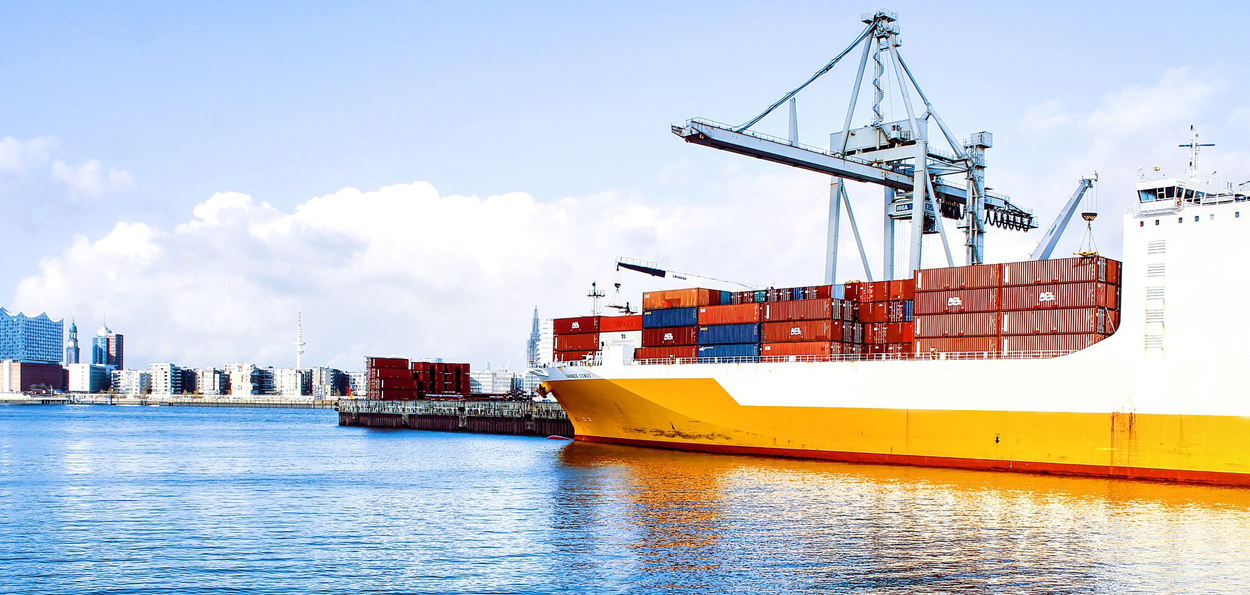
Field: Grön omställning
Metal recycling economic markets
The demand for metals increases at the global level., in part as result of the transition to a carbon-free economy and the growth in information and communication technologies. A continued increase in metal demand over the coming decades is also expected, both for the bulk metals (e.g., steel, copper, aluminum) and the so-called critical metals (e.g., lithium, cobalt, rare earth elements). Metal recycling plays a key a role in maintaining a sustainable supply of these metals in the future.
The purpose of this report is to present a conceptual analysis of the markets for secondary metals, and how the functioning of these markets affects the competition between primary and secondary metal production. The analysis focuses on different types of market failures and barriers that tend to work against the emergence of more efficient recycling markets, and on the most predominant lessons for the role of policymaking. Throughout the report, the conceptual analysis is accompanied by empirical examples from both the base metal and critical metal sectors. These illustrate, among other things, the complexity as well as the heterogeneity of the existing markets for recycled metals.
From the analysis presented in the report, we derive five general lessons for policymaking.
A product-centric rather than a material-centric approach is needed
There is a clear trend of metal use in society becoming increasingly complex. One and the same product can contain many metals, typically in various alloys and combined with other materials. Products are also changing rapidly with improvements in performance and the adding of new functions, and this is achieved through the introduction of smaller and smaller components, more integrated materials, and new metal alloys. This complexity complicates the recycling process, not least in the case of critical (small volume) metals. The prerequisites for recycling differ across metals, but they differ even more based on in which products and constructions the metals are embedded. This makes it necessary to move away from a material-centric approach, e.g., in the form of weight-based recycling targets, to a product-centric approach.
The product-centric approach builds on an increased understanding of the incentives facing the actors through the product lifecycle. This is essential for identifying the policies that can address the market failure that arises when a product is manufactured and designed in a manner that increases the cost of material recycling after the product has been discarded. A key challenge for policy is to strike a balance between measures that improves the product design at the manufacturing stage on the one hand and measures that permit the recycling of complex mixed waste streams on the other. Today, there is overall a bias in favor of the latter and there is less incentive for manufacturers to increase the recyclability of products.
The main policy instruments that are currently used to increase metal recycling rates – e.g., producer responsibility schemes for packaging waste, electronics, and batteries – provide only weak incentives for increased recyclability of products. An important first step is thus to increase the flow of information throughout the entire value chain. One policy option is the implementation of product passports, which could help increase the transparency about the specific materials that are embedded in products and how these can be recycled. An EU initiative concerns the implementation of such passports in the cases of industrial batteries and batteries in electric vehicles. Furthermore, there is also need for evaluating how policy instruments such as the producer responsibility legislation can be improved to increase the incentives for recyclability of metals and other materials.
Increased metal recycling requires a mix of policy instruments
The report shows that the emergence of efficient markets for recycled metals, not least the critical metals, will in many cases be hindered by the presence of several different market failures. This implies in turn that policy action for increased metal recycling typically must rely on a mix of various policy instruments.
First, such policy action is often based one the so-called waste hierarchy, och in this way it represents a substitute for a more direct – but also practically and politically unachievable – environmental policy (e.g., taxes or performance standards regulating emissions into air and water). Research shows that that policy aspiring to represent such a substitute and help internalize negative environmental externalities must build on mix of (at least) two policy instruments: one that creates an incentive to buy less of waste-generating products and one instrument that increases the incentives to sort out and collect products for recycling. Some policy instruments, such as deposit-refund systems and producer responsibility legislations, provide such a mix of incentives.
Second, there may also exist market failures that are not related to the presence of external environmental costs, but instead to other lack of incentives that reduces the efficiency of recycling markets. For this reason, policy instruments that aim at overcoming various types of information failures (e.g., standardization, classification), reducing the transaction costs (e.g., more transparent waste legislation), and improving the recyclability of products (e.g., product passports) could all provide complements to the instruments directly targeting the waste hierarchy. The report, though, also illustrates the heterogeneity of metal recycling markets. For instance, information failures (e.g., the presence of asymmetric information) do not always constitute a barrier at the markets for recycled bulk metals (e.g., steel scrap), but they can be prevalent in the case of the recycling of many critical metals.
Occasionally efficient incentives exist even in the absence of policy action
The report identifies empirical case where the market actors have been able to address a few of the market failures in efficient ways. Scrap classifications and standards (e.g., for tests of scrap quality) have been initiated by industry organizations, and this has helped reduce the information-related market inefficiencies at the supply side. There are also key examples where the users of metal-containing products (e.g., catalysts) cooperate with recycling firms but retain the ownership of the metal. Such collaborations have created incentives for improved product design and recycling, and they have also enabled firms to become less exposed to the significant price volatility in the markets for critical metals.
It is important to note, however, that in many other situations it is much more difficult for the involved actors to internalize the externalities associated with product recyclability. In such cases the products may be owned (or have been owned) by private consumers, and the ownership has changed over the product’s lifecycle. Research shows that the scope for effective business models in which product manufacturers and recycling firms cooperate is particularly favorable if property rights are well-defined (and do not change over time) and if the transaction costs are low enough.
Some barriers to increased metal recycling are difficult to address both by market actors and policy makers. This stems from the facts that some metals, not least critical ones, are produced as byproducts, and the supply of scrap is constrained by previous consumption and investments patterns. The above implies that the supplies of secondary metals but also some primary metals are insensitive to price changes. The low price-elasticity of supply in combination with an income-sensitive metal demand generates big fluctuations in prices.
Conventional environmental policies may sometimes be more efficient
The notion that policies aiming at higher recycling rates represent substitutes for a more direct regulation of environmental impacts has important implications; recycling as waste management option needs to imply less negative environmental impacts than other options. And even if policy instruments that are based on the waste hierarchy are well-motivated, there may nevertheless exist other types of (‘second-best’) policy instruments that are more efficient than a sole reliance on the waste hierarchy. These include technology standards and bans on hazardous substances in products. Clearly, such policies also involve difficult trade-offs since such instruments will often be deficient in some sense. For instance, the Swedish chemicals tax on electronics may reduce the incentives for circular solutions.
The prerequisites for implementing conventional environmental or chemical policies, e.g., performance standards, will change over time as result of technological change. Policy therefore needs to support technological development, which for instance facilitates cheap monitoring of emissions as well as enabling the tracing and measuring of the presence of chemicals in products. However, it is quite unclear today which actors have the incentives to promote and undertake the R&D activities needed to design regulations that can target diffuse environmental damages more closely.
Policy plays a key role in promoting directed green technological change
The motives for policy support to green technological change and the emergence of novel value chains differ, but typically they are based on the presence of knowledge spillovers and high investment risks. Overall, these market failures could be significant in the metal-producing sectors. The launch of a green industrial policy needs to recognize the feedbacks (iterations) between knowledge generation and market formation, as well as the fact that the perquisites for technological progress differ across sectors. The above implies reliance on a mix of technology-push and demand-pull instruments, as well as so-called systemic instruments that strengthen the entire technological innovation system. The latter includes legal amendments, e.g., the rules regulating the classification of “waste” and “products” and the international trade with secondary materials. The report also shows that promoting technological change in the metal recycling sector often needs to build on the emergence of novel actor networks throughout the product value chains, and an important task for policy can be to help set up new platforms for actor collaboration (network management).
Technological change in metal recycling is likely most efficiently promoted at the EU – rather than at the nation – policy level. This would, in combination with cooperation also with countries outside the Union, increase the prospects for achieving extensive knowledge exchange throughout the entire value chains. The most important challenges in terms of increased recycling of both bulk and critical metals include improved product design (for recyclability) but also the emergence of large-scale processes for automatic dismantling and shredding of waste.
There is a need for in-depth case studies
An important goal of this report has been to develop and illustrate an analytical framework, which can serve an important point of departure for more in-depth studies. A necessary next step is therefore to conduct more detailed case studies of recycling market failures. One interesting option for such case studies is the work by the Swedish Agency of Growth Policy Analysis on the value chains for a few critical metals, e.g., lithium-ion batteries. Case studies on the recycling of rare earth elements from mining waste is another option.
Metal recycling economic markets
Serial number: Rapport 2021:10
Reference number: 2020/248
Download the report Pdf, 1.1 MB.


